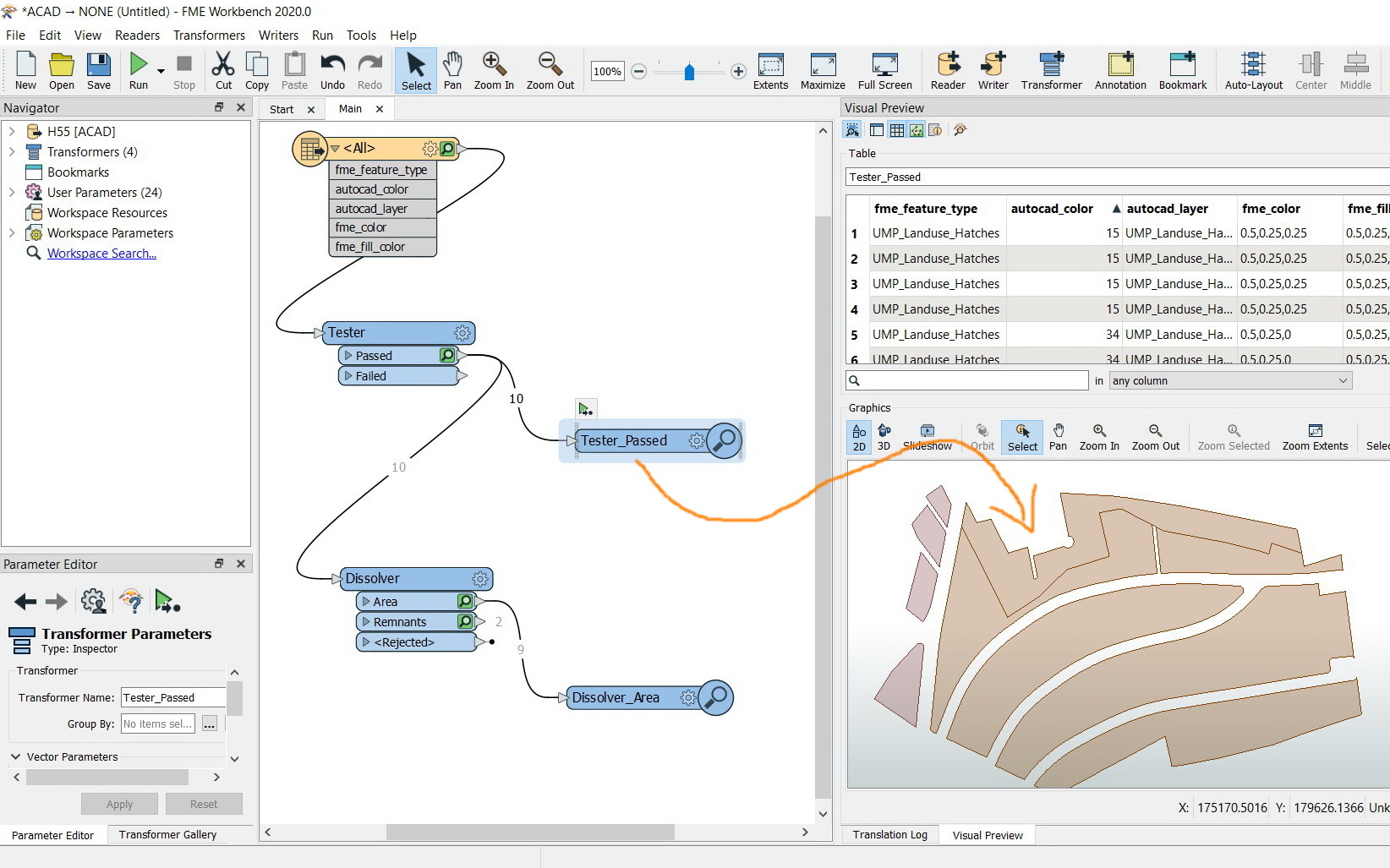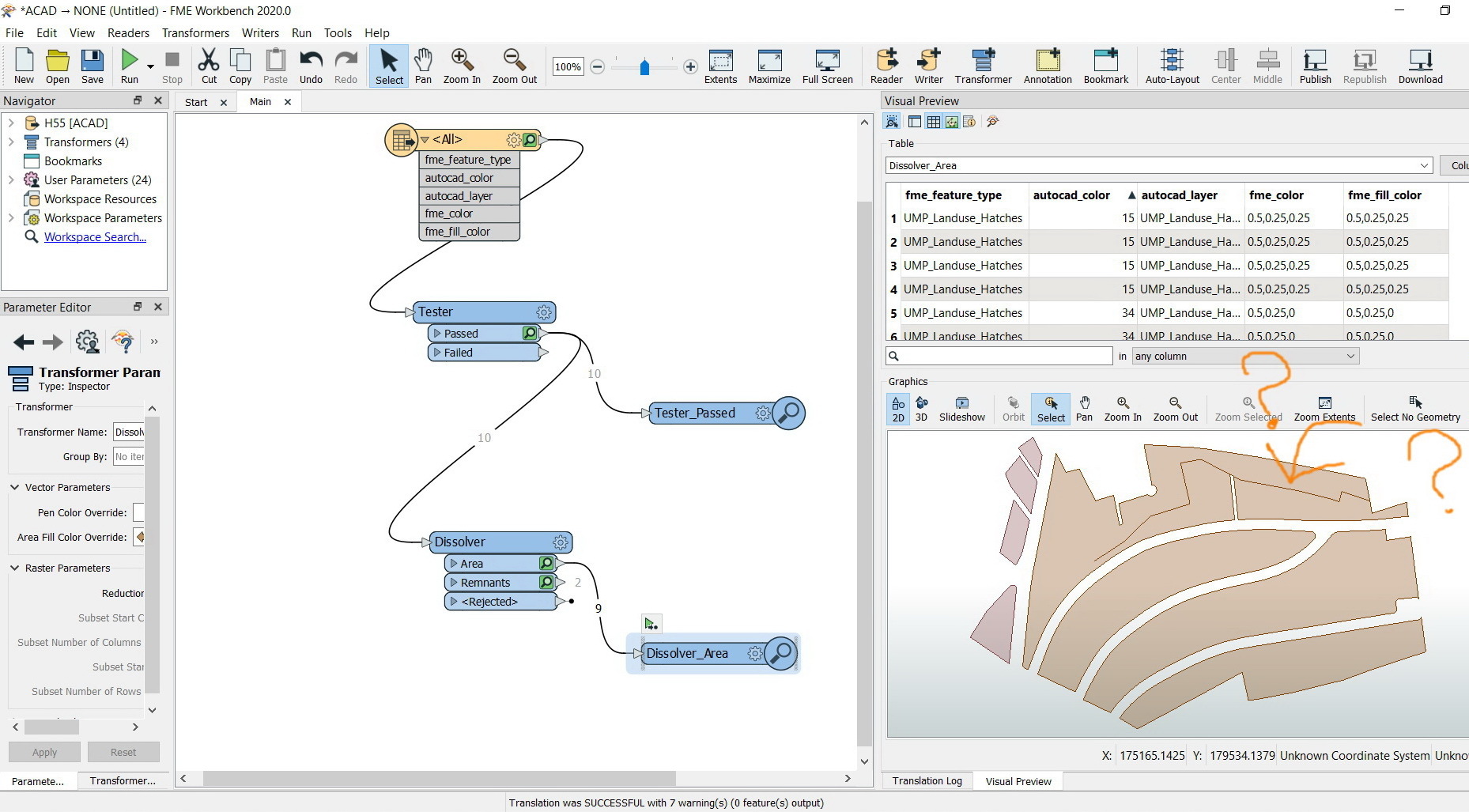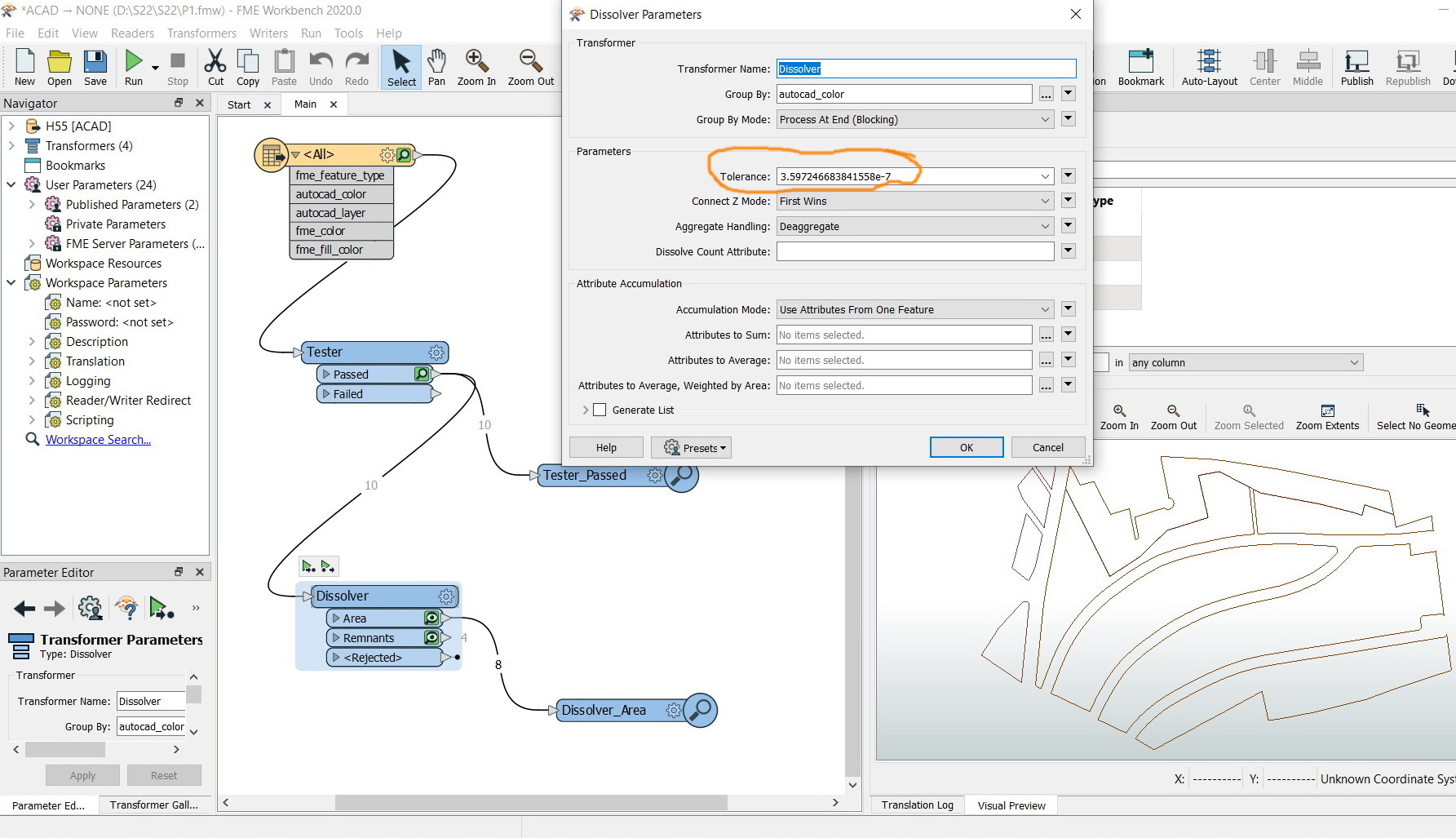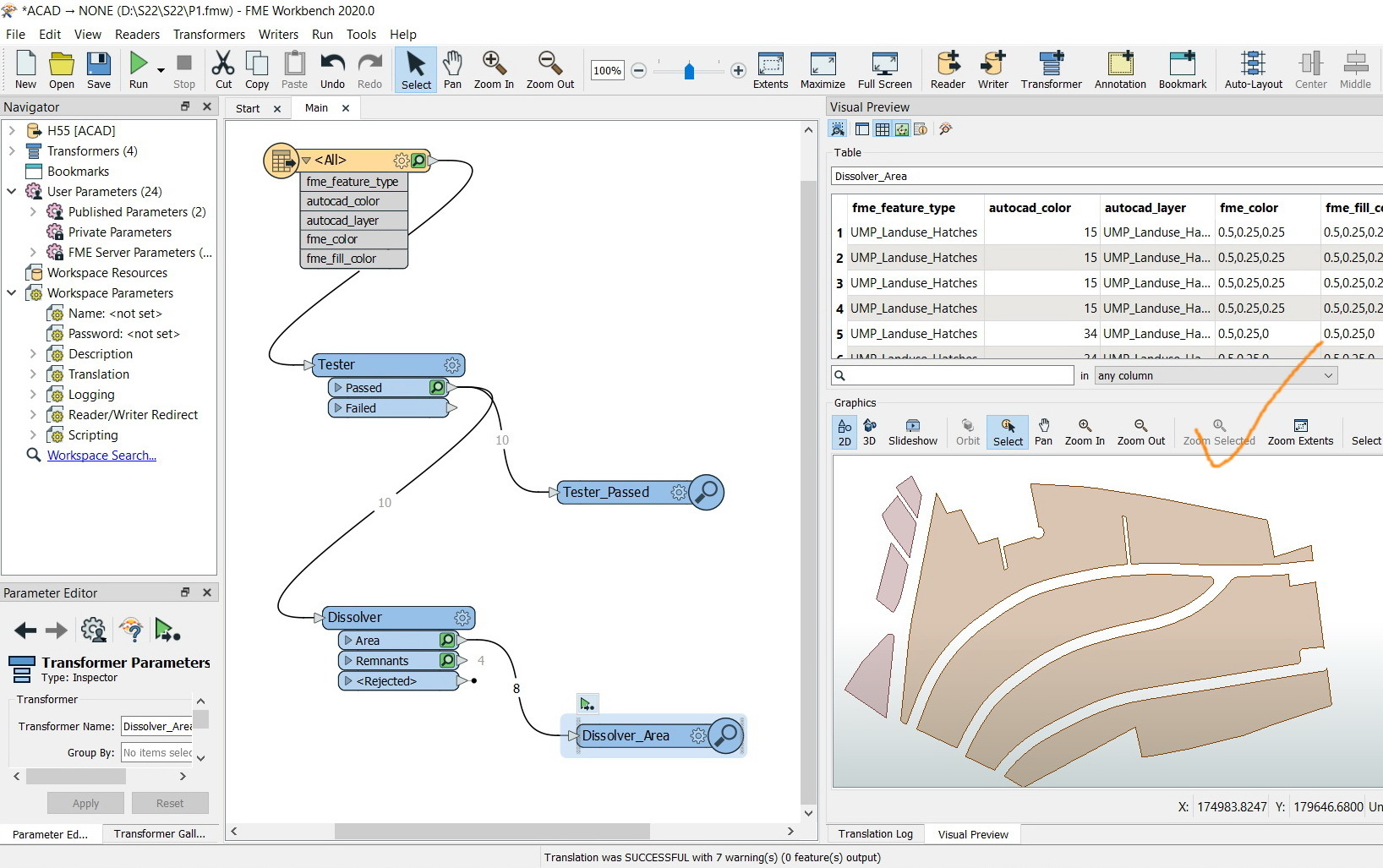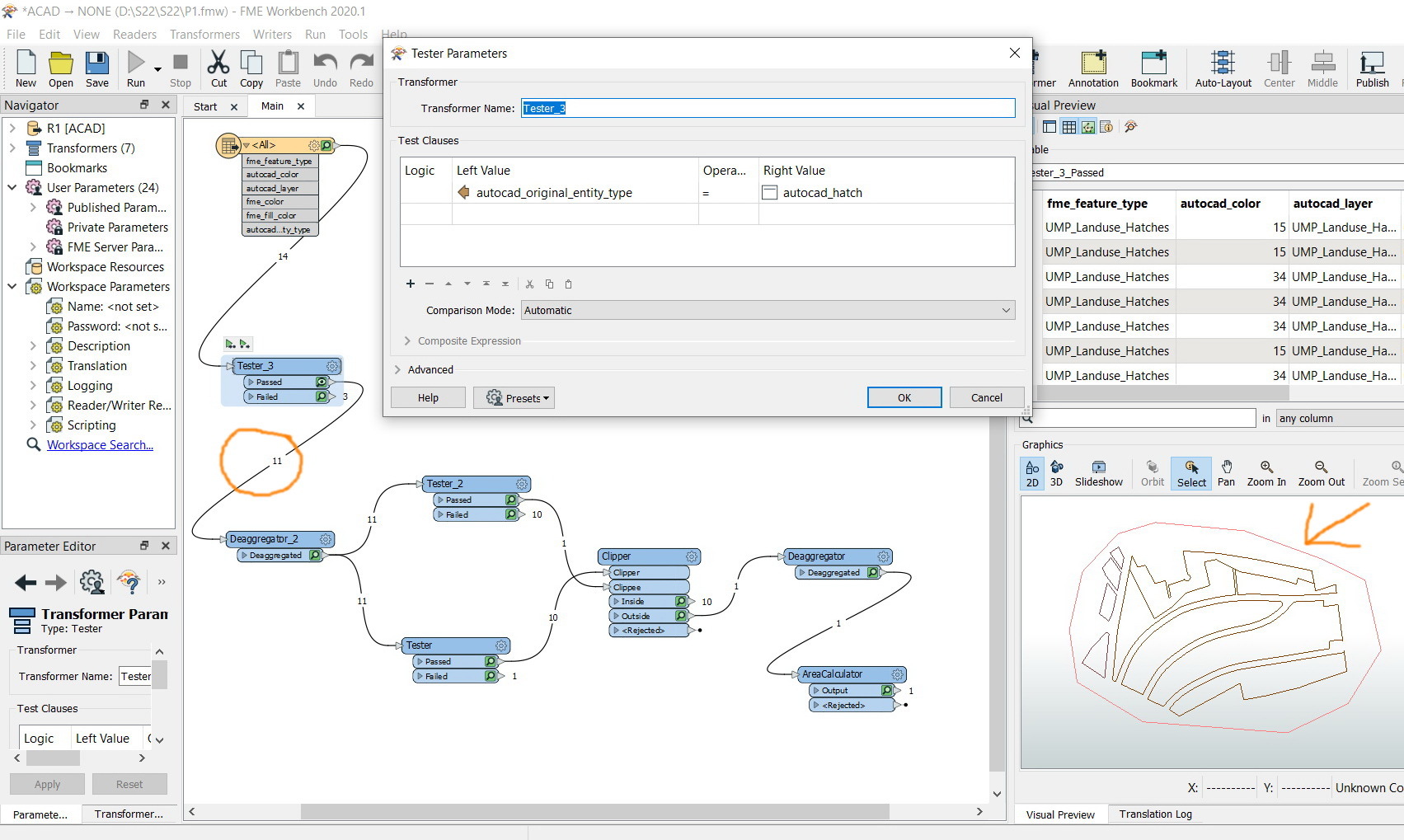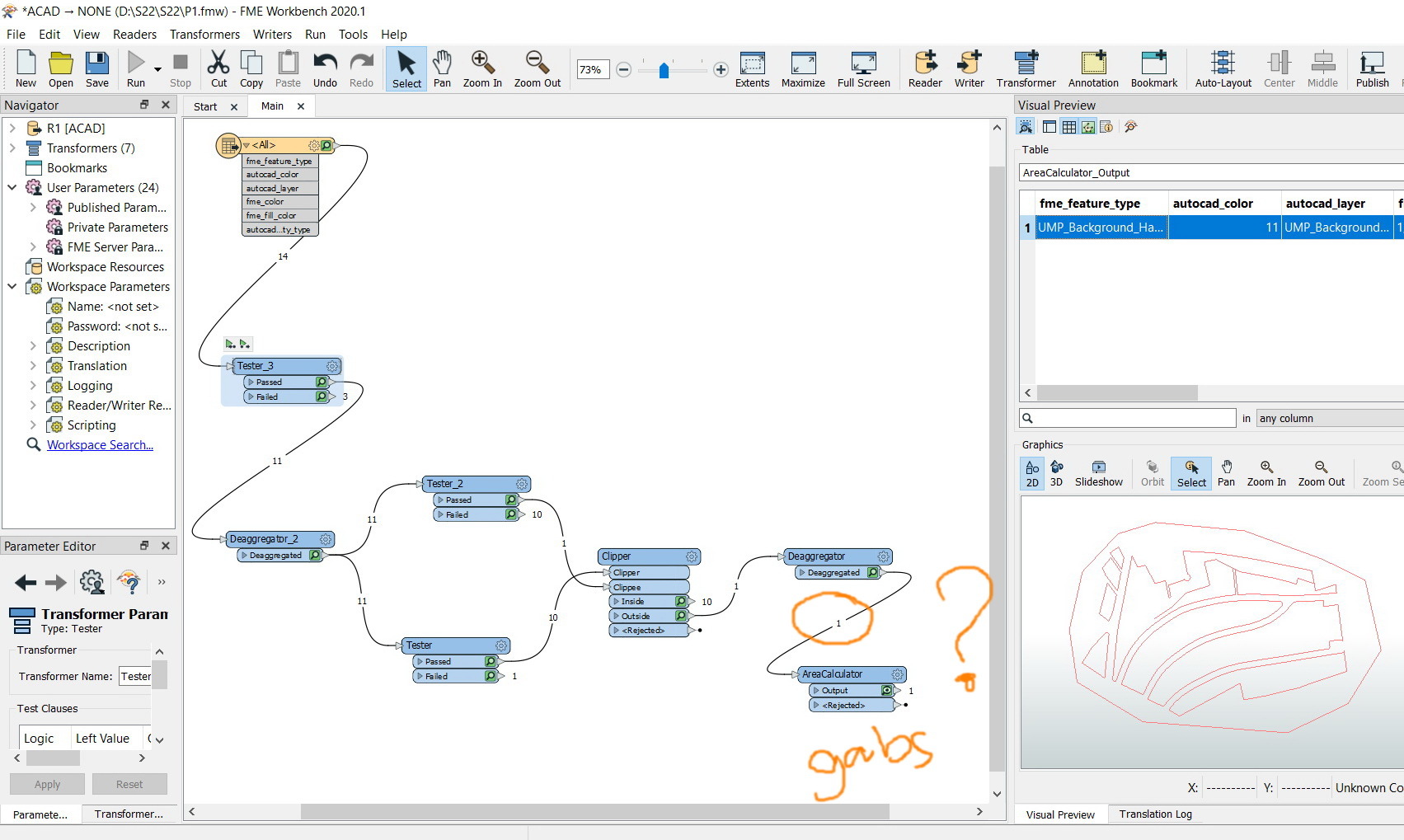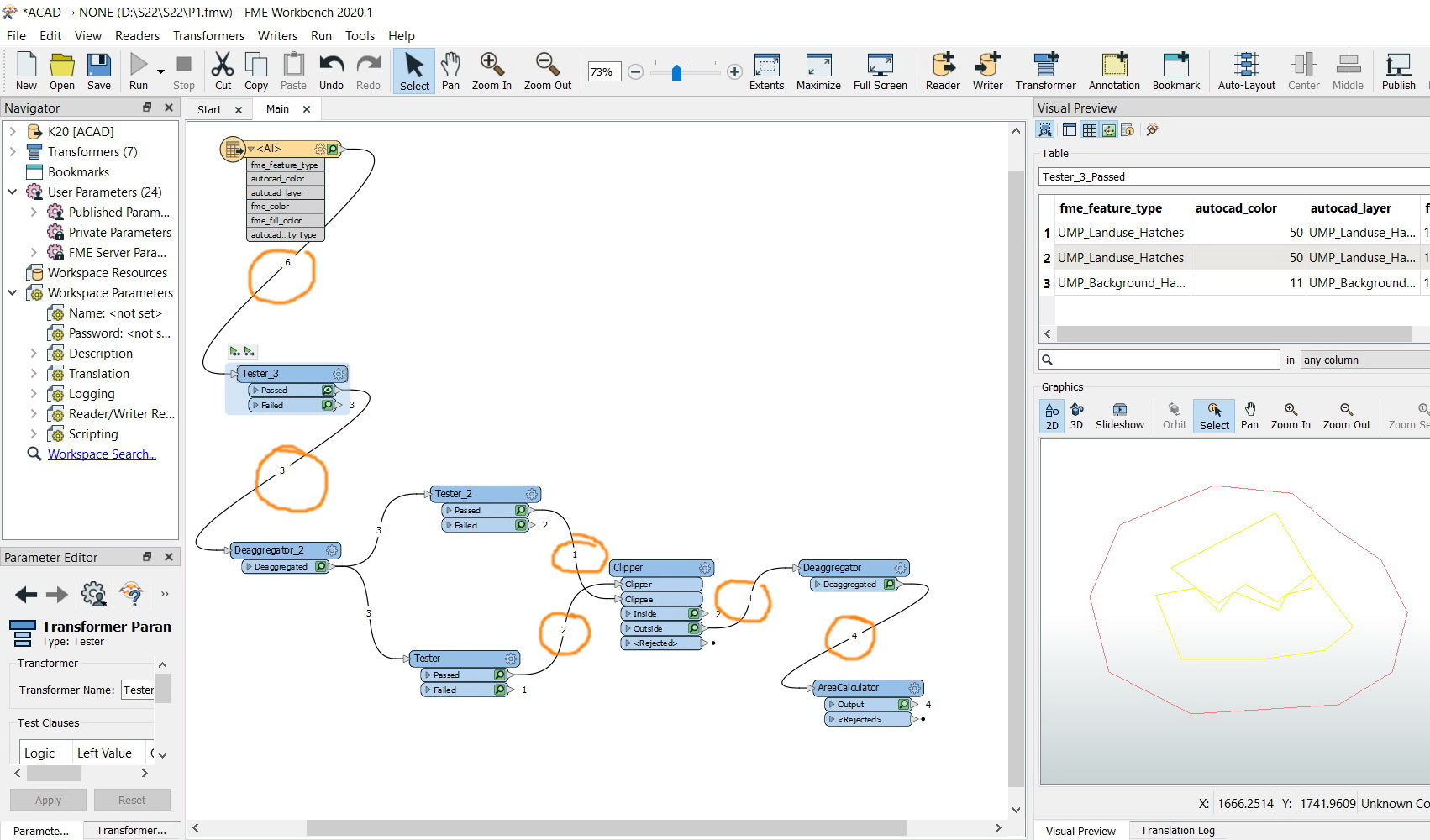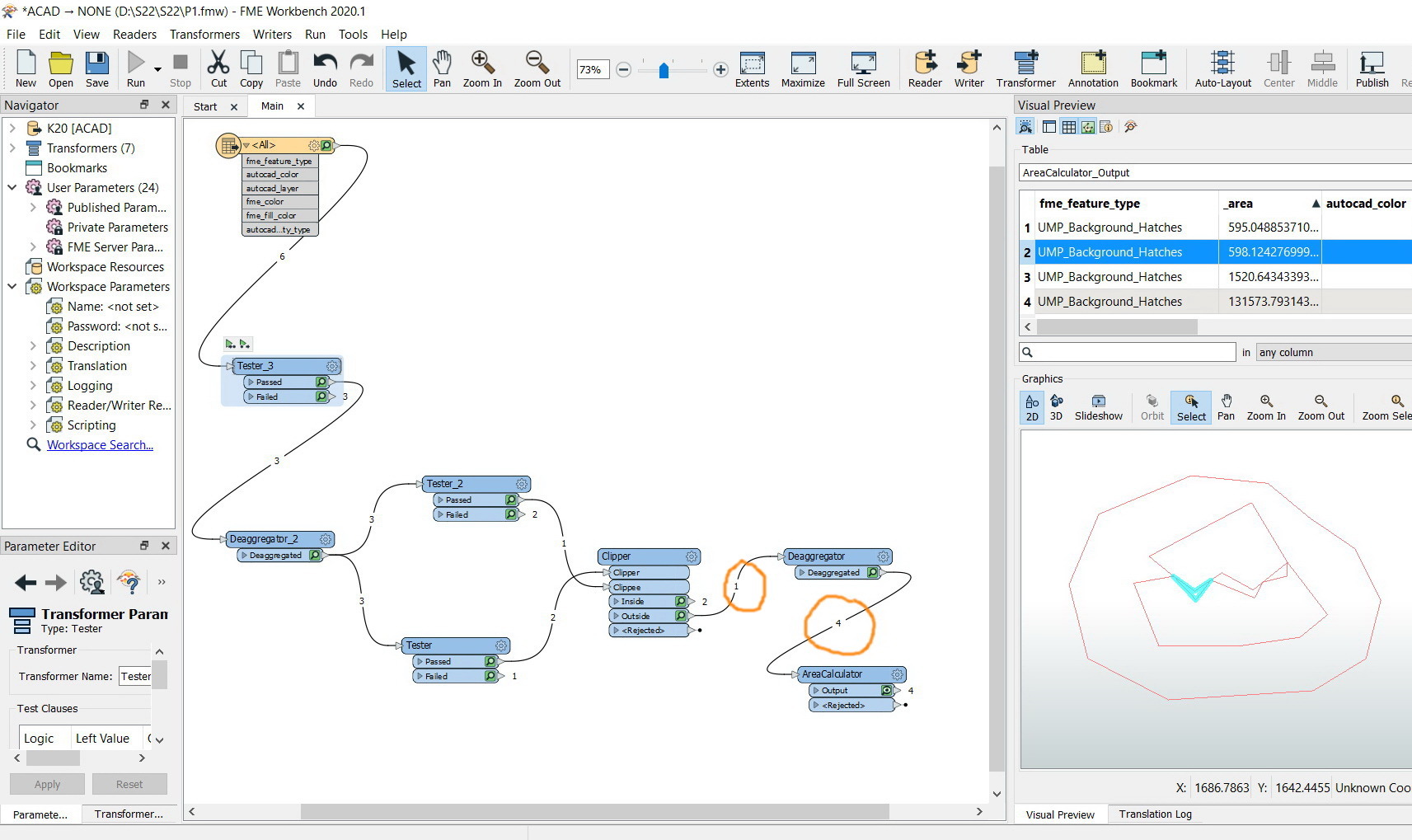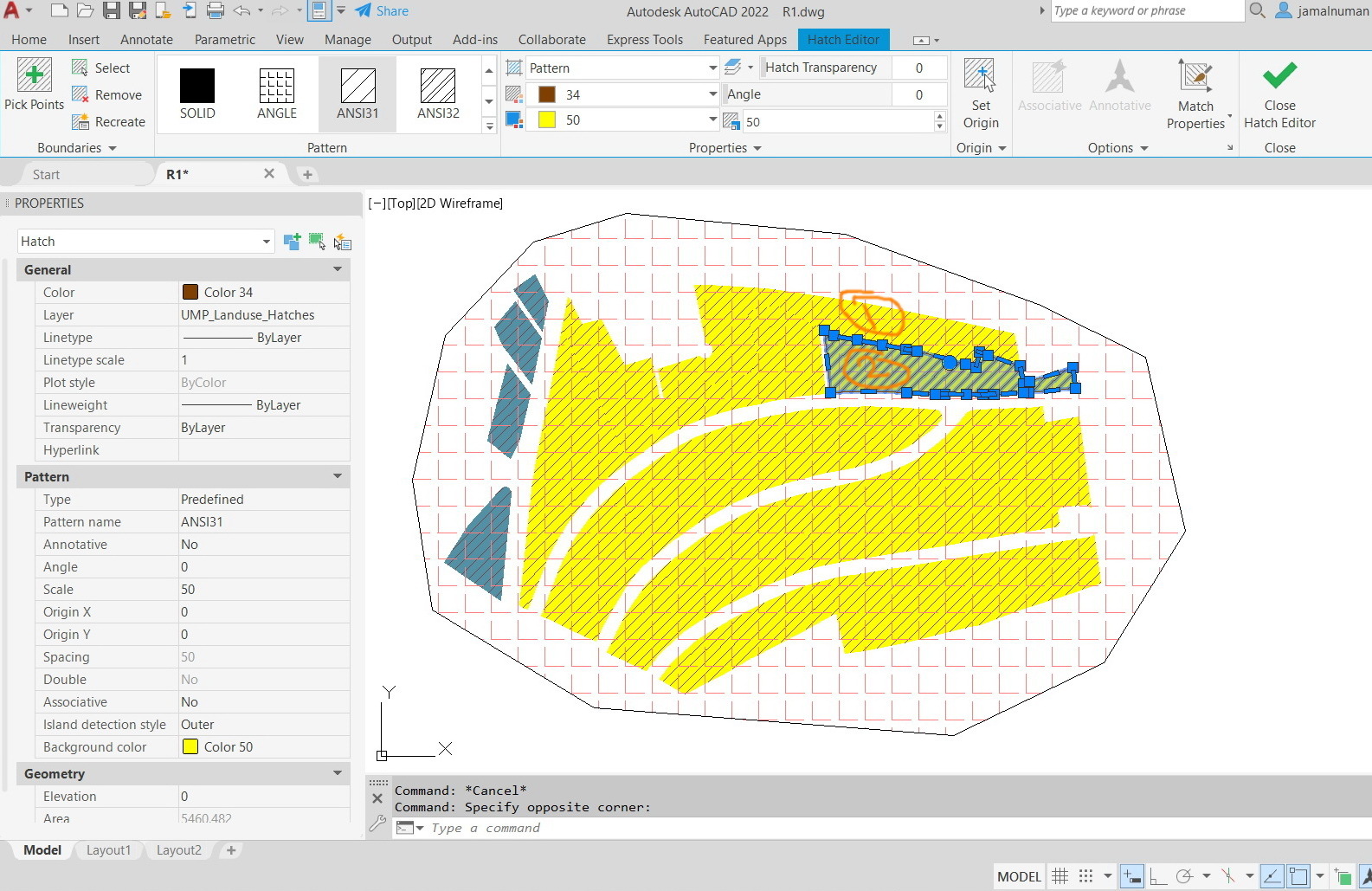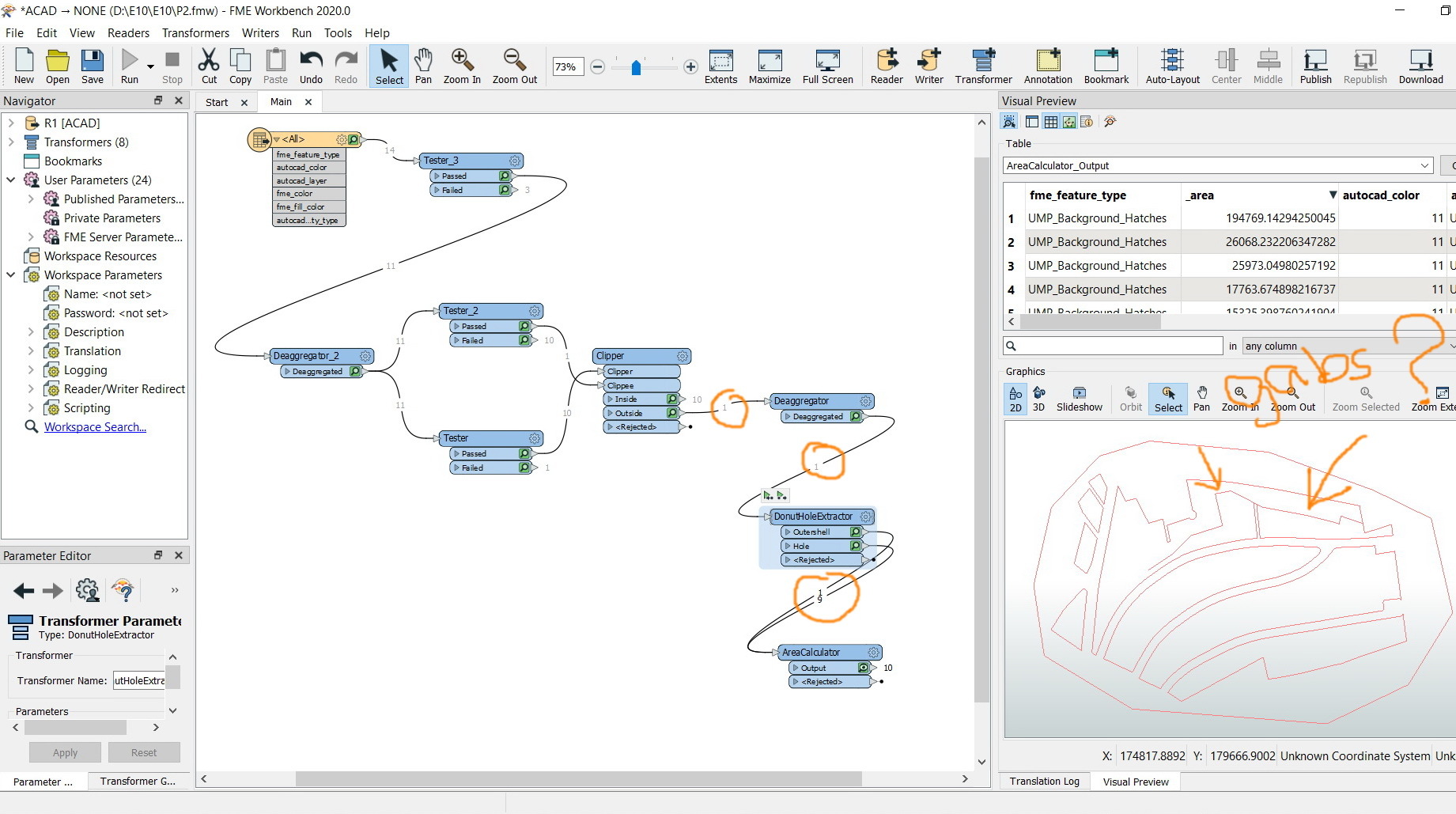FME Desktop 2020: The “dissolver” tool fails to dissolve adjacent polygons based on their colors,
In the screenshot below, I wanted to dissolve polygons based on their color. At the marked location, I expected that these polygons should be dissolved. However, they don’t and a line is still appearing.
What could be the issue here?
The data and workbench are attached
